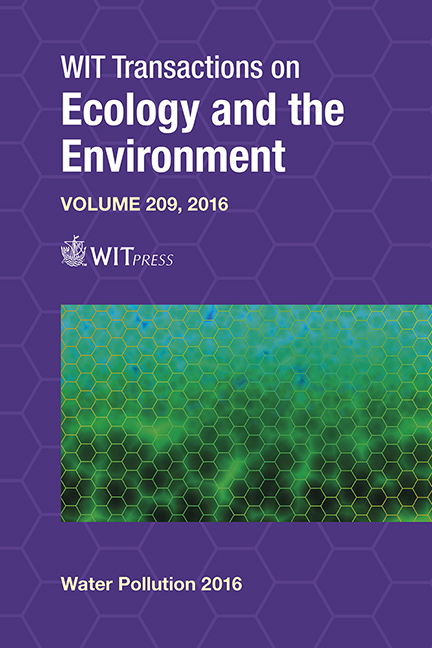Intercalation Of Mn2+ Ions Onto Bentonite Clay: Implications In Groundwater Defluoridation
Price
Free (open access)
Transaction
Volume
209
Pages
10
Page Range
151 - 160
Published
2016
Size
1,143 kb
Paper DOI
10.2495/WP160141
Copyright
WIT Press
Author(s)
R. Mudzielwana, W. M. Gitari, T. A. M. Msagati
Abstract
Fluorosis is a chronic disease caused by drinking water with a fluoride concentration greater than 1.5 mg/L for extended periods of time. The disease is manifested by tooth decay in dental fluorosis and deformation of bones in skeletal fluorosis. The World Health Organization (WHO) has set fluoride limits in drinking water at 1.5 mg/L. Most rural areas of South Africa depend on groundwater as a source of drinking water. However, groundwater in some of the boreholes has a concentration of fluoride above the permissible limit and will require defluoridation. The present work aims at evaluating the use of Mn2+ intercalated bentonite clay for defluoridation of groundwater. Clay was characterized for mineralogy using X-ray diffraction (XRD) and elemental composition using X-ray fluorescence (XRF) and morphology using scanning electron microscopy (SEM). Batch experiments were conducted to evaluate and optimize various operational parameters such as contact time, adsorbent dose, pH and initial adsorbate concentration. Optimum operation conditions for adsorption of fluoride were established to be 30 min contact time 1.0 g/100 mL adsorbent dosage, 3 mg/L adsorbate concentration and pH of 2. Maximum percentage Fremoval of 84.0% was achieved at optimized conditions. Mn2+ intercalated bentonite clay removed = 55.89% of fluoride from field water. The study shows that Mn2+ intercalated bentonite clay has potential for application in defluoridation of groundwater.
Keywords
batch experiments, fluorosis, bentonite clay, defluoridation





